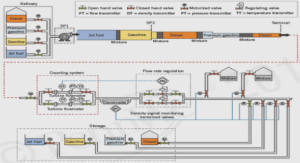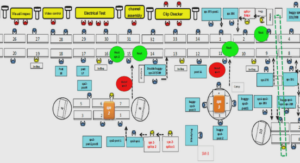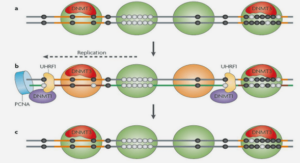General Experimental Methods
Anhydrous dichloromethane was obtained by distillation from calcium hydride under nitrogen. Anhydrous THF and diethyl ether were obtained by distillation from sodium benzophenone ketyl under nitrogen. Other solvents were used as supplied by commercial sources. Petroleum ether refers to the fraction of light petroleum ether, boiling between 40-60 °C. Purification procedures were in accordance with the instructions in D. D. Perrin and W. L. F. Armarego, “Purification of Laboratory Chemicals”, Fourth Edition, The Bath Press, Bath, 2002. All reactions were carried out under dry, oxygen free nitrogen. Flash chromatography was performed on silica gel (SDS, 60 Å C. C. 40-63 m) as the stationary phase. Thin Layer Chromatography (TLC) was performed on aluminum plates pre-coated with silica gel (Merck silica gel, 60 F254), which were visualized by the quenching of UV fluorescence when applicable (max = 254 nm and/or 366 nm) and/or by staining with anisaldehyde or vanillin in acidic ethanol followed by heating. When compounds could not be visualized with anisaldehyde or vanillin, a solution of phosphomolybdic acid in ethanol or a potassium permanganate aqueous solution were used. Infrared spectra were recorded as solutions in CDCl3 using CaF2 cells, on a Perkin-Elmer FT 1600 or FT 2000. Absorption maxima (max) are reported in wavenumbers (cm−1 ) and only selected peaks are reported. Magnetic resonance spectra were recorded at ambient temperature on either a Bruker AMX 400, or a Bruker Avance DPX 400 instrument. Proton magnetic resonance spectra ( 1H NMR) were recorded at 400 MHz. The following abbreviations were utilized to describe peak patterns when appropriate: br = broad, s = singlet, d = doublet, t = triplet, q = quartet and m = multiplet. Carbon magnetic resonance spectra ( 13C NMR) were recorded at 100 MHz. Chemical shifts (H, C) are quoted in parts per million (ppm) and are referenced to the residual solvent peak (CDCl 3: H = 7.26 and C = 77.0). High-resolution mass spectra were recorded by positive electron impact ionization (EI+) at 70 eV on a JEOL JMS-GCmate II mass 180 spectrometer. The quoted masses are accurate to ± 5 ppm. DLP corresponds to di-lauroyl peroxide (often sold under lauroyl peroxide or laurox).
General procedure
A for radical addition: A magnetically stirred solution of xanthate (1 equiv) and olefin (1.5 equiv to 3.0 equiv) were dissolved in ethyl acetate (1 ml/mmol of xanthate ) was refluxed for 15 min. DLP (5 mol%) was then added and additional DLP (5 mol%) was added every 60 min until total consumption of xanthate. The mixture was then cooled to room temperature and the solvent was evaporated under reduced pressure. The residue was either engaged in a new reaction or purified by flash chromatography on silica gel to yield the desired compounds. General procedure B for reduction: The residue was dissolved in dioxane (10 mL/mmol) then triethylamine (3.3 equiv.) and a solution of H3PO2 50% in water (3 equiv.) were added. The solution was refluxed for 15 min and AIBN (10%mol) was then added. After 1 hour, the solution was allowed to cool to room temperature, water and ethyl acetate were added. The organic layer was washed with water and brine, dried (Na2SO4) and concentrated in vacuo. The residue was purified by flash chromatography on silica gel to yield the desired compounds.
3-(1,3-Dioxo-1,3-dihydro-isoindol-2-yl)-3-ethoxythiocarbonylsulfanyl-propionic acid methyl ester (3-25)
Phthalimide (30 g, 0.21mol) and methyl acrylate (28.2 ml, 0.3 mol) with DBU (15.6 ml, 0.1 mmol) were stirred in acetonitrile (100 ml) at room temperature for 2 hours. The reaction mixture was then concentrated under reduced pressure and poured into petroleum ether to get a solid which was washed with water to yield pure product 190 3-22 (45.4 g, 94%). 3-22 (2.1 g, 9.00 mmol), NBS (1.92 g, 10.08 mmol) in CCl4 (150 ml) was heated at reflux under nitrogen for 5 h; the reaction was initiated by irradiation with a 300 W lamp. The reaction mixture was then cooled, filtered and washed with sodium thiosulfate. After extracting the solution with DCM, the organic layer was concentrated under reduced pressure to yield 2.3 g product 3-23 (83%) without further purification. 3-23 (2.3 g, 7.5 mmol) was dissolved in acetone (2 ml per mmol). Under a nitrogen atmosphere KSCSOEt (1.3 g, 8 mmol) was added portion wise over a period of five minutes. It was then left to stir for a further twenty minutes before the acetone was evaporated off under reduced pressure. The residue was then taken up in DCM/H2O and extracted. The DCM layers were dried over Na2SO4 before being filtered and evaporated under reduced pressure to yield the crude xanthate. This was then purified by column chromatography using petroleum ether: ethyl acetate, 25:1~10:1 v/v, to obtain 2.1 g 3-25 as a pale yellow oil in 80% yield.
3-(1,3-Dioxo-1,3-dihydro-isoindol-2-yl)-6-phenoxy-hexanoaic acid methyl ester (3-26-1)
Following the general procedure A for radical addition, the reaction was carried out with a solution of 3-25 (150 mg, 0.42 mmol) and allyl phenyl ether (86 mg, 0.64 mmol), and needed 20 mol% of DLP to go to completion. The reduction was done following the general procedure B. Flash chromatography on silica gel (petroleum ether: ethyl acetate, 10:1 v/v) afforded 120 mg 3-26-1 (yield: 78%) as a pale yellow oil.
3-(1,3-Dioxo-1,3-dihydro-isoindol-2-yl)-6-(trimethylsilyl)-hexanoic acid methyl ester (3-26-2)
Following the general procedure A for radical addition, the reaction was carried out with a solution of 3-25 (150 mg, 0.42 mmol) and allyl trimethylsilane (96 mg, 0.84 mmol), and needed 20 mol% of DLP to go to completion. The reduction was done following the general procedure B. Flash chromatography on silica gel (petroleum ether: ethyl acetate, 5:1 v/v) afforded 96 mg 3-26-2 (yield: 66%) as a colorless oil.
(1,3-Dioxo-1,3-dihydro-isoindol-2-yl)-6-cyano-hexanoic acid methyl ester (3-26-3)
Following the general procedure A for radical addition, the reaction was carried out with a solution of 3-25 (150 mg, 0.42 mmol) and allyl cyanide (43 mg, 0.64 mmol), and needed 20 mol% of DLP to go to completion. The reduction was done following the general procedure B. Flash chromatography on silica gel (petroleum ether: ethyl acetate, 4:1 v/v) afforded 103 mg 3-26-3 (yield: 82%) as a pale yellow oil.





